Potrebujeme váš súhlas na využitie jednotlivých dát, aby sa vám okrem iného mohli ukazovať informácie týkajúce sa vašich záujmov. Súhlas udelíte kliknutím na tlačidlo „OK“.
ASTM D5080-08
Standard Test Method for Rapid Determination of Percent Compaction
Automaticky preložený názov:
Štandardná skúšobná metóda pre rýchle stanovenie percent zhutnenia
NORMA vydaná dňa 1.2.2008
Informácie o norme:
Označenie normy: ASTM D5080-08
Poznámka: NEPLATNÁ
Dátum vydania normy: 1.2.2008
Kód tovaru: NS-29762
Počet strán: 9
Približná hmotnosť: 27 g (0.06 libier)
Krajina: Americká technická norma
Kategória: Technické normy ASTM
Kategórie - podobné normy:
Zemní práce. Hloubicí práce. Budování základů. Podzemní práce
Anotácia textu normy ASTM D5080-08 :
Keywords:
compaction control, density, field density, field test, moisture content, moisture control, moisture-density, rapid compaction control, unit weight, Unit weight, Accelerated aging/testing, Compaction measurement--soils, Density--soil/rock/related materials, Field testing--soil, Moisture-density (MD) relationships, Rapid compaction control, Soil, Soil-moisture analysis, ICS Number Code 93.020 (Earth works. Excavations. Foundation construction. Underground works)
Doplňujúce informácie
| Significance and Use | ||||||||||||||||||||||||
| p>The rapid method is performed to quickly evaluate percent
compaction and variation from optimum moisture content of soils
used in construction without knowing the value of field moisture
content at the time of the test.
Test results are usually determined within 1 to 2 h from the start of the test. The value of percent compaction obtained using the rapid method will be the same as the percent compaction calculated using dry density values. The value of the difference between field moisture content and optimum moisture content will be approximate, but will be within ±0.1 to 0.2 percentage point of the difference calculated once the field moisture content is known. Test results may be used to determine if the compacted material meets density and moisture control values that are specified as a percentage of a standard maximum density and optimum moisture content such as determined in Method A of Test Methods D 698. A three-point compaction curve is used in place of the four- or five-point curve required in Test Methods D 698. This test method is based on the assumption that a three-point compaction curve is a parabola at the section of the curve close to optimum moisture content so that the peak point of the curve can be determined mathematically. This assumption results in the major difference between this test method and obtaining the maximum density and optimum moisture content from a full five-point compaction curve. Once the field ovendry moisture content has been determined, the values of dry density, dry unit weight, and optimum moisture content can be calculated (see Note 1). This test method can also be used for foundation or borrow area material to compare in-place dry density and unit weight and moisture content to laboratory maximum dry density and unit weight and optimum moisture content. This test method has the advantage that the maximum density value can be obtained on the same soil excavated during the in-place density test. Note 1—Since there is no need to immediately determine the moisture contents of material from the in-place density test or the laboratory compaction points, use of rapid moisture content determinations such as microwave, direct heat, nuclear, etc., is not needed. However, if desired, the percent compaction and variation from optimum moisture content may be determined using dry density values based on rapid moisture content test methods. Using three compaction points and determining the maximum density mathematically would still apply. However, the rapid moisture content methods may give results that differ from the accepted oven-dried moisture content values and will lengthen the time of performing this test method. Note 2—Notwithstanding the statements on precision and bias contained in this test method, the precision of this test method is dependent on the competence of the personnel performing it and the suitability of the equipment and facilities used. Agencies that meet the criteria of Practice D 3740 are generally considered capable of competent and objective testing. Users of these test methods are cautioned that compliance with Practice D 3740 does not in itself ensure reliable results. Reliable testing depends on many factors; Practice D 3740 provides a means of evaluating some of those factors. |
||||||||||||||||||||||||
| 1. Scope | ||||||||||||||||||||||||
|
1.1 This test method describes the procedure for rapidly determining the percent compaction and the variation from optimum moisture content of an in-place soil for use in controlling construction of compacted earth. These values are obtained by developing a three-point compaction curve at the same moisture content as the in-place soil without knowing the value of the moisture content. The soil used for the compaction curve is normally the same soil removed from the in-place density test. For the remainder of this designation, this test method will be referred to as the rapid method. 1.2 This test method is normally performed for soils containing more than 15 % fines (minus No. 200 sieve size). 1.3 When gravel-size particles are present in the soil being tested, this test method is limited to a comparison of the minus No. 4 sieve-size fraction of the in-place density material to a laboratory compaction test of minus No. 4 sieve-size material (Method A of Test Methods D 698). Subject to the limitations of Practice D 4718, this test method is also applicable to comparisons of other sieve-size fractions (for example, Method C of Test Methods D 698) or other compactive efforts (for example, Test Methods D 1557) if new moisture adjustment values are determined (see 6.1 and Appendix X2). 1.4 The values stated in SI units are to be regarded as the standard. 1.4.1 The use of balances or scales recording pounds of mass (lbm), or the recording of density in pounds of mass per cubic foot (lbm/ft3) should not be regarded as nonconformance with this test method. 1.5 All observed and calculated values shall conform to the guidelines for significant digits and rounding established in Practice D 6026 unless superseded by this standard. 1.5.1 The procedures used to specify how data are collected, recorded or calculated in this standard are regarded as the industry standard. In addition they are representative of the significant digits that generally should be retained. The procedures used do not consider material variation, purpose for obtaining the data, special purpose studies, or any considerations for the user’s objectives; it is common practice to increase or reduce significant digits of reported data to be commensurate with these considerations. It is beyond the scope of this standard to consider significant digits used in analytical methods for engineering design. 1.6 This standard does not purport to address all of the safety problems, if any, associated with its use. It is the responsibility of the user of this standard to establish appropriate safety and health practices and determine the applicability of regulatory limitations prior to use. For specific hazard statements, see Section 9. |
||||||||||||||||||||||||
| 2. Referenced Documents | ||||||||||||||||||||||||
|
Podobné normy:
Historická
1.1.2011
Historická
1.1.2008
Historická
1.5.2010
Historická
1.2.2010
Historická
1.1.2011
Historická
1.11.2011


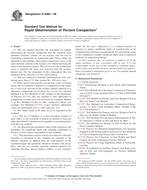
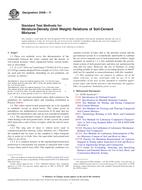 ASTM D558-11
ASTM D558-11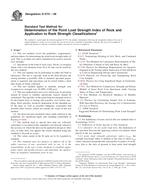 ASTM D5731-08
ASTM D5731-08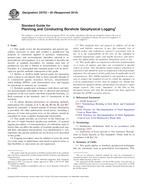 ASTM D5753-05(2010)..
ASTM D5753-05(2010)..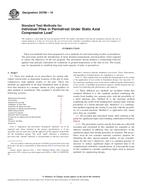 ASTM D5780-10
ASTM D5780-10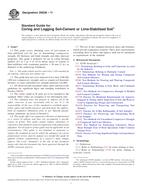 ASTM D6236-11
ASTM D6236-11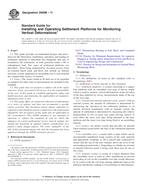 ASTM D6598-11
ASTM D6598-11
 Cookies
Cookies
